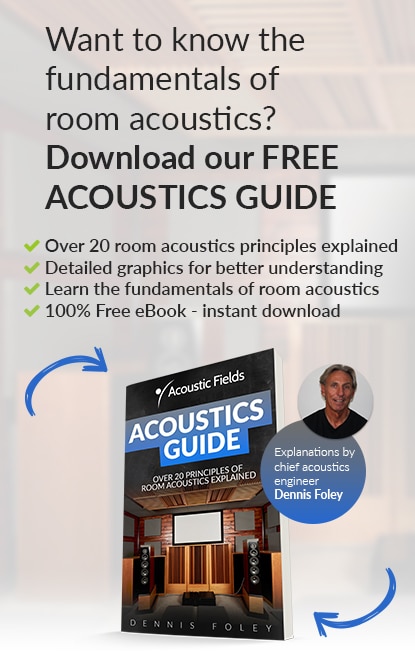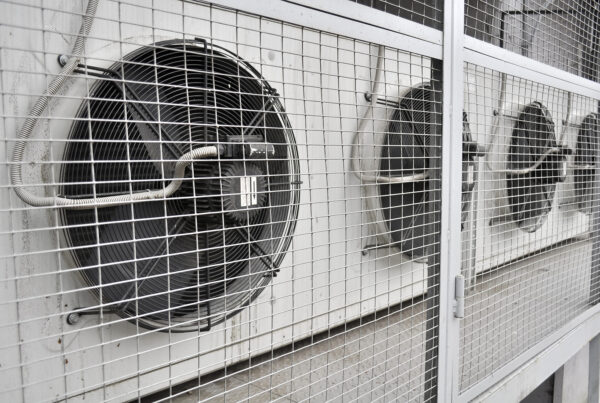Audio Engineering Society
In the Audio Engineering Society, Convention Paper 5944, authors Dirk Noy, Gabriel Hauser, and John Stork tested eight, commercially available, low frequency absorption devices. These test results were published in 2003 at the 115th convention of AES. That was 9 years ago.
Test Room
The test room was a rectangular, concrete, room that measures approximately 10′ x 15′ x 8′. Test analysis software was the SIA Smart Pro. Version 3.5. Measurement microphones were by Bruel and Kjaer.
Test Equipment
A 12″, sealed, sub was used to generate the necessary test energy. The sub was placed in the corner where the short wall meets the longer wall, firing into the room down the long way. The designated surface area for sound absorption to occur in was directly across the room from the sub woofer in the opposite corner starting in the corner and working its way down the long side wall. The test microphone was placed at the opposite room end as the sub woofer and test area.
Test Subjects
It appears from the dimensions given for each product test sample that each product tested was approximately 2′ x 4′ in size. All the test units were described as broadband membrane absorbers, tuned Helmholtz resonators, and an active or electronic controlled loudspeaker. Each broadband membrane absorber had its membrane stretched out over a wood or metal box. Membranes were made of wood, rubber, and metal.
Test Variables
Measurements were taken in the empty room and a baseline was formed. Test samples were moved in and RT 60 Reverberation /Decay Time with 1/3 octave resolution were performed and presented with a decay waterfall display. Frequency response was also recorded and noted.
Absorber Construction
Each membrane absorber tested was constructed basically the same way using different materials. The first 4 samples tested were described as a “closed wood box with membrane absorber”. The first 3 units had rubber membranes stretched across a wood box. The fourth unit had a fiberboard membrane with the same wood box. The Helmholtz resonator and active speaker were also tested. Lets look at the fifth unit more closely. It was the one that performed the best.
Winner
The “winner” was made differently. It did not have a rubber or fiberboard membrane. It had a metal membrane. It was only 2mm thick. The inside of the test unit was lined with melamine foam. The box was metal. Why did this unit out perform the rest?
Metal Membrane
A metal membrane face on the winning unit has something that the rubber and wood membranes do not. Metal has a higher density than wood. It is density that makes the unit work better than the rest. Low frequency absorbing technologies must have mass to work. Low frequency waves must be slowed down using mass not found in wood or rubber membranes.
Cabinet Construction
The winner also had a metal box or cabinet instead of wood or fiberboard. Once again, we have greater density in cabinet construction materials used. It is the cabinet density and the cabinet size, particularly the cabinet depth, that also must be addressed. The cabinet fill material was foam.
Cabinet Fill
Using foam to fill the cabinet to slow sound energy down with and control internal cabinet resonances is another step in the right direction, just not a large enough step. Cabinet fill material must be made of materials that compliment the density of the cabinet face membrane and the density of the cabinet itself. This will allow for the cabinet fill to contribute to the units overall performance instead of just dealing with existing cabinet resonances. Special attention must be paid to fill material that lowers cabinet Q values.
Good Start
These membrane absorbers had the right idea to start with, they just didn’t use enough mass in the cabinet construction. The winner had the right idea of using more mass in its membrane but it was not thick enough to have a drastic impact on its performance. Just the use of a thin metal membrane in a metal box gave it the edge. The metal box and metal face had higher mass than wood and rubber. There is no substitute for cubic inches.
Test Sample Design
Looking at the design of all of these units, we see a membrane face and a box filled with foam. There is a design factor for their construction and materials that were used in the samples. Manufacturers designed units that were lightweight and can be easily shipped to customers. The manufactures tried to achieve as much performance as they could with the smallest weight factor. This is a noble effort, but it does not achieve anything that can really assist us with our small room, low frequency issues. We could fill a room full of these units and still be unhappy with the results.
New Technology
All of these low frequency absorbers are using and describing the basics of diaphragmatic absorption technology. They were all attempts to use diaphragmatic absorption, but only the technology. This was proper form without any real substance. All the test samples produced by different manufacturers had portability and lower shipping costs as their guidelines, not performance.
Diaphragmatic Absorber On Steroids
If we take the diaphragmatic absorber concept which has been used for years and take all the performance variables of the technology into consideration, we have the basis for newer and much higher performing technology. If we increase the density of the membrane or unit face(remember the winner had a metal membrane) and then add another “membrane”, we can increase the diaphragmatic absorbers efficiency by a larger factor than just using a single membrane made out of rubber or fiberboard. A higher density, dual wall, construction technique will add to the diaphragmatic absorbers performance. Two walls working together are much better than one when it comes to slowing down low frequency wavelengths.
New Cabinet Depth
Cabinet depth with a diaphragmatic absorber is the most important factor to the overall unit’s performance. The minimum cabinet depth to achieve large amounts of low energy absorption down into the 30 cycle range is 8″. Any smaller cabinet depth will require a higher density cabinet with weight approaching levels that are difficult to package and ship, let alone use.
New Cabinet Density
Cabinet density is second critical factor. To achieve down into the 30 Hz. range with our absorbers, we must start with at least 4.5 lbs. / sq. ft. of cabinet density. Multiple cabinet layers are welcome to increase cabinet rigidity and force the dual wall to move more freely and react more to sound pressure exerted upon the absorbers face. Multiple cabinet material layers with damping compound in between each layer to minimize cabinet vibrations, goes a long way to assist overall unit performance.
New Cabinet Fill
The final frontier in the diaphragmatic absorber technology is the cabinet fill material. The test samples all used foam. Foam will only absorb the resonances inside the cabinet cavity, which does not begin to address the issues. The material used inside the cabinet must be powerful enough to not just absorb internal cavity resonances, but it must act in a way that contributes drastically to the overall units performance. Cabinet fill material must be chosen to drastically lower the internal cabinet’s Q value.
A Much Better Mousetrap
If we take the basics in diaphragmatic absorption technology and increase all the major variables performance, we can create a powerful low frequency absorber that will actually absorb low frequency energy along with reducing attack and decay levels inside our small rooms. If we use a dual wall for the face, with each wall’s density determined by vibrational formula, we can have a greater impact on all frequencies absorbed. Cabinet density must be calculated along with cabinet depth to achieve the maximum absorption at certain weight requirements necessary for unit portability. Internal cabinet fill must not be foam or building insulation. Activated carbon is the only cabinet material that lowers the cabinet’s Q value down to a level that compliments all other cabinet variables. It is heavy and expensive, but it really works.






If you know the frequency and amplitude of the reflection, you have a better chance of identifying sources.
Can the quality of a sound reflection identify the reflection source?
Use whatever floor type suits your usage. Carpet should have a carpet pad under the carpet. Hardwood floors should have…
Hello. This article mentions choosing a sound absorbing carpet and a pad. Could you please give examples of products? I…